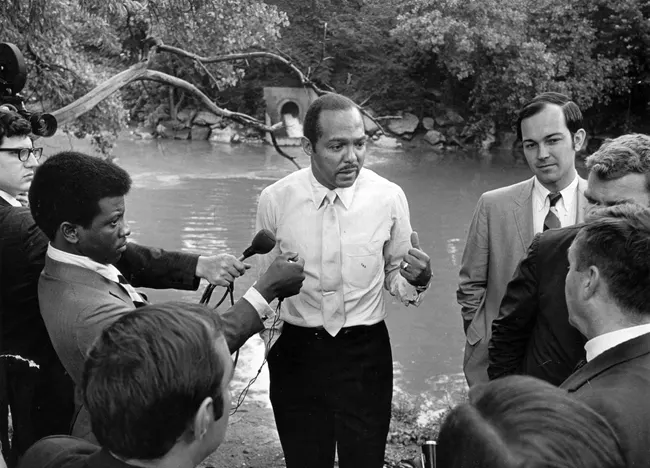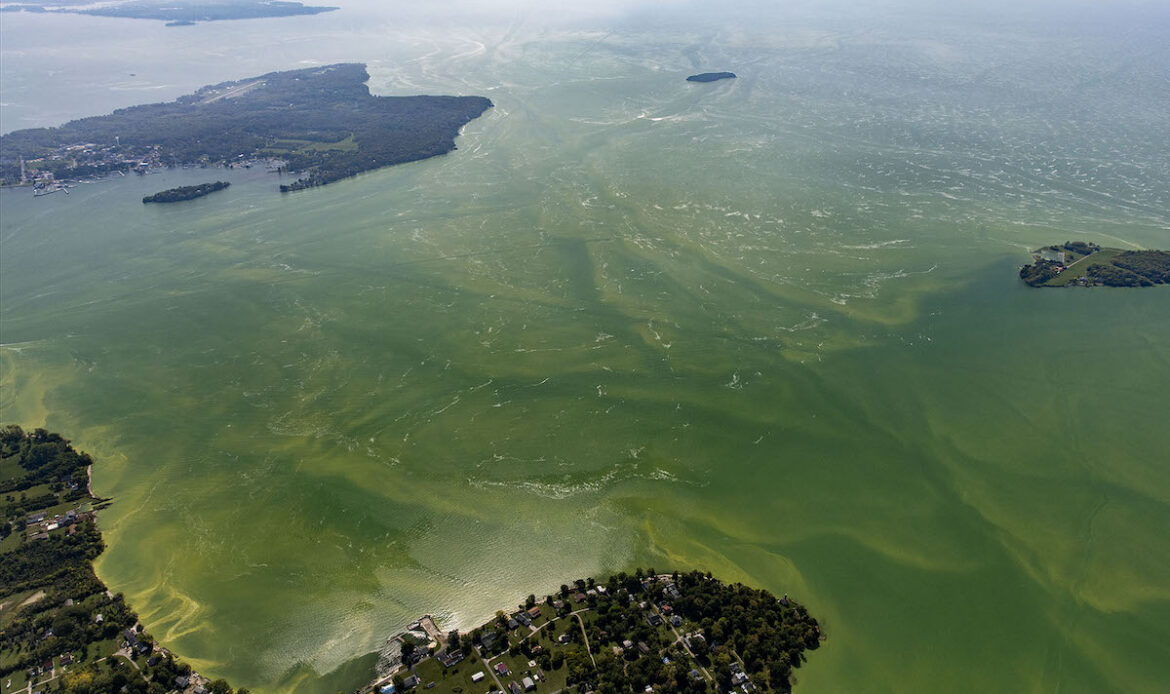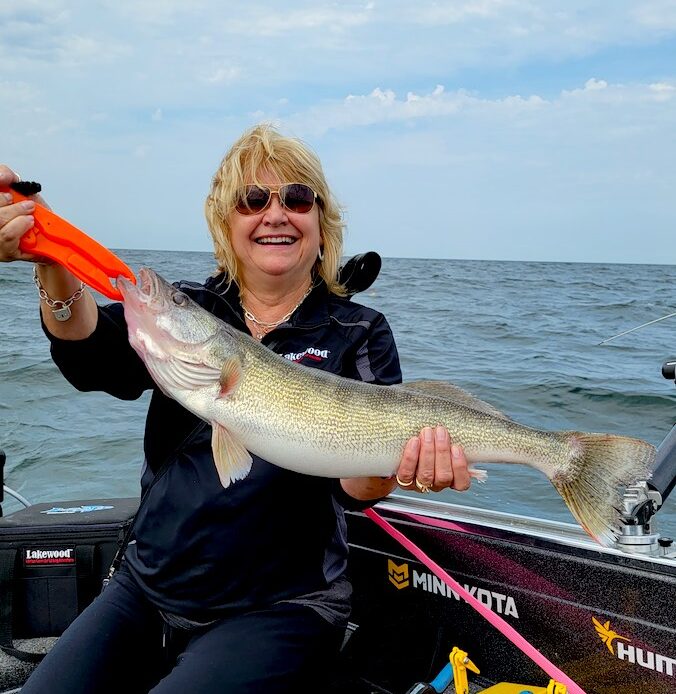How Lake Erie Helped Bring About Modern Fisheries Conservation
“No more can they hum for their gills are all gummed…Oh, their future is dreary. They’ll walk on their fins and get woefully weary in search of some water that isn’t so smeary. I hear things are just as bad up in Lake Erie.” -Dr. Suess, The Lorax, 1971
“My 1971 statement in the Lorax about the condition of Lake Erie needs a bit of revision. I should no longer be saying bad things about a body of water that is now, due to great civic and scientific effort, the happy home of smiling fish.” –Dr. Suess, 1986
What Caused Lake Erie’s Lowest Point
In case you missed part one, “Lazarus Lake Part 1“, Lake Erie died. In the early 1970s, the lake became synonymous with putrefaction, pollution, and the foul by-products of modernity and industrialization. Sewage, fertilizer, and chemical waste overwhelmed Erie from every direction. Public beaches were either closed or turned into chlorinated pools, their swimming areas treated with bleach and separated from the lake with plastic barriers. Fish populations crashed from a combination of overharvesting, pollution, and habitat loss. Commercial fishing was prohibited for a time due to the dangerous levels of mercury found in fish, but by that point, it hardly mattered. No one was willing to buy, much less consume, anything caught from the nation’s most famously polluted body of water. In less than a generation, Lake Erie went from being the most fertile fishery in the Great Lakes to a symbol of tainted nature. Some of that stain lingers today. Ask most people what they associate with Erie, and the words “dirty” and “pollution” will likely emerge.
In actuality, Lake Erie’s water quality and fish populations rebounded astonishingly fast. From the early ’70s through the ’90s, the lake itself reached a level of cleanliness and health unseen for decades. It turns out that ecosystems can change faster than cultural attitudes. The irony of Erie’s scarlet lettering extends beyond its impressive recovery, however, because Erie also played an outsized role in turning the tide of water pollution all over the United States.
A Mythical Blaze Ignites Real Change
The first installment of this series described the Cuyahoga River Fire and the Time Magazine story that brought it to national prominence. The dramatic images Time printed of a major river engulfed in flames galvanized U.S. citizens around the cause of water pollution, but those photos didn’t actually show the infamous 1969 fire. They were taken nearly 20 years before during one of the other Cuyahoga River fires (there were nearly a dozen in total) that didn’t make big headlines.
The relatively small 1969 river blaze was more of an opportune political moment than a catastrophic event. The day after the fire, Cleveland’s Mayor Carl B. Stokes—the first black mayor of a major American city—led a press tour along the river calling attention to the industrial site of the fire and various sewers spewing pollution. The 2015 book “Where the River Burned: Carl Stokes and the Struggle to Save Cleveland” explains Stokes’ intent: “During the pollution tour, Stokes attempted to assign meaning to the fire. He argued that the city was not in a position to control the pollution within its borders…Cleveland had no power over its suburbs…And it had no control over state regulations and the pollution permit system.”

Stokes saw an opportunity in the oxymoronic flames burning across the water. He leveraged the tragedy to bring attention to the shameful state of his city and garner resources from the federal government to improve the living conditions of his community, but that decision and his later efforts helped improve the lives of all Americans.
After the images published in Time Magazine attracted national attention, Mayor Stokes testified before Congress about, “his and other major big cities’ struggles with polluting industries to restore the environmental health of their communities.” Stokes’ outspoken and relentless activism joined a growing chorus of national concern over burning rivers, oil spills, and water pollution in general. Though momentum toward improving water quality began in the mid-1960s, the Cuyahoga River Fire and the stories about it are now synonymous with a major legislative and cultural paradigm shift. President Richard Nixon created the Environmental Protection Agency at the end of 1969, and Congress passed the Clean Water Act in 1972, which directly led to the Great Lakes Water Quality Agreement later that year.
The Policies That Shaped the Restoration of Lake Erie
Those policies literally changed the landscape of the United States. Municipalities could no longer dump raw sewage into rivers, lakes, or oceans and were given grants to upgrade their wastewater treatment plants. Businesses, large and small, had to conform to pollution standards instead of dumping their toxic by-products into public waterways. The Clean Water Act has resulted in 12% more fishable rivers across the United States, but its impact has been particularly apparent across the Great Lakes—Lake Erie especially.
Erie’s water quality changed faster than most people realize. Between 1972 and ’79, the level of phosphorus (a major contributor to algal blooms) dropped by nearly 70%. Over that same period, the level of PCBs and DDT found in small fish at the bottom of the food chain decreased by 60% and 80%, respectively. By the early 2000s, DDT was virtually gone from Erie fish, and PCBs continued to decline by about 3% every year. From 1974 to 2010, mercury concentrations in Erie game fish decreased by nearly half.
Lake Erie still absorbs far more nutrient and sediment loads from surrounding cities and communities than would be optimal for the fishery. Large algal blooms occur most summers, sucking the oxygen out of localized areas and killing thousands of fish.

After decreasing for decades, mercury levels have leveled off and are even starting to rise again in some areas. Compared to 50 years ago, however, the lake is an unequivocal conservation success story, an example of what can be achieved in a relatively short period of time.
Decreased Pollution and Strict Quotas Have Brought Back Booming Fish Populations
Decreasing the levels of pollution in Lake Erie and strict harvest quotas have brought huge populations of fish back to the most fertile of the Great Lakes, but we didn’t turn back time 200 years. Industrialization completely altered much of the habitat and hydrology of the lake, and while it maintains a staggering carrying capacity, those permanently changed habitats benefit some fish while harming others.
Some species like blue pike and long-jawed cisco are likely gone forever. Others, like lake trout, sturgeon, whitefish, northern pike, and muskie, have made only modest comebacks and still struggle with the lake’s warmer waters. But Erie’s hotter, more turbid character has actually benefitted certain species. Walleye and yellow perch populations are higher than ever before. Smallmouth bass and sunfish are also thriving. These particular sport fishes are better suited to 21st Century Erie than they were to 17th Century Erie.

If you chase walleye (like millions of other Americans), that’s good news for you. We created a walleye paradise unlike any other. In the next and final article in this series, I’ll explain how Erie became the greatest walleye fishery on the planet.



